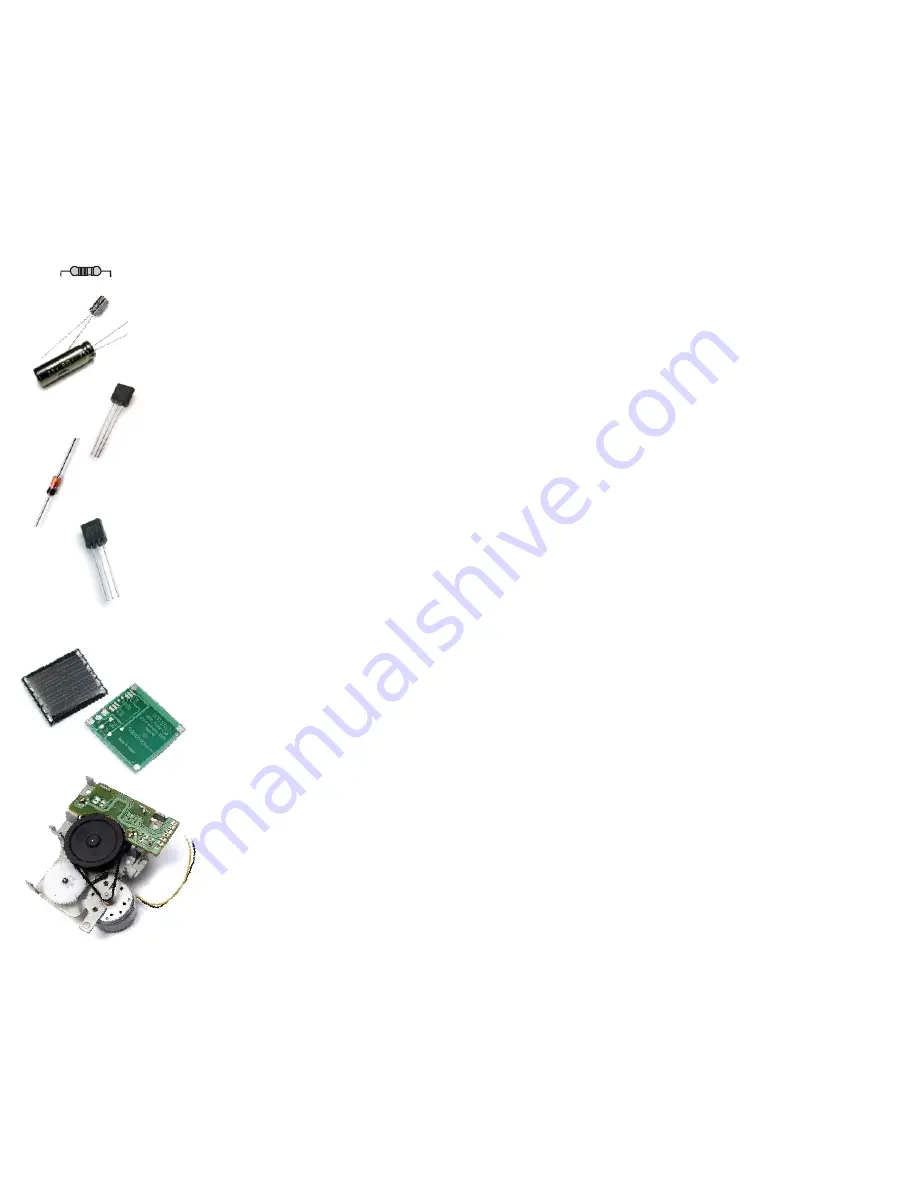
Parts Overview
This is the part you’ve probably skipped over unless either you’ve already got your circuit
working and want to know more about why,
or
you’re waiting for a bus to pick you up and
take you to work/school (please don’t read this while driving). Whatever your reason, here’s
the poop:
The circuit is made of
types of electronic components, of which the first three make up a
five
good 80% of what you will find in almost any electronic device. These are:
Resistors -
These are devices that "resist" the flow of electric current. Think of them like a
narrow neck in a river. But we won’t be using one in this circuit - heh!
Capacitors - Capacitor acts much like a small rechargeable battery, except that they charge
and discharge much more efficiently. Think of these like water tanks on the
side of the river that can be filled then emptied back into the river.
Transistors - Transistors are essentially switches that use a tiny amount of current to control
the flow of a much larger current. These are like dam floodgates on a river.
Diode -
This is like a one-way check valve, allowing current to flow through it in one
direction only.
1381 -
The 1381 voltage trigger is a small three pin integrated chip (IC) that looks
much like a transistor. It was originally designed to detect low voltage levels in
the batteries of portable electronic devices, like cellular telephones and
portable computers. These take very little power to monitor the voltage,
making it much more efficient than older trigger devices like zener diodes or
flashing LEDs.
Solar Cell -
Solar cells are very thin specialized chips that convert the photons impinging
the PN junction into electrical current. Translation: The thingy that turns light
into electricity. Usually the bigger, the better.
Motor -
The motor you’ll be using in this kit is from a
micro-cassette player.
This
mechanical assembly was originally designed to be used in an answering
machine, but you’re going to use it for the motor and other mechanical bits you
may want to rip off it. A motor is simply a way to turn electrical energy into
mechanical motion we can see and use.
Please note that m
otor mechanism may not be exactly as shown.
2




































